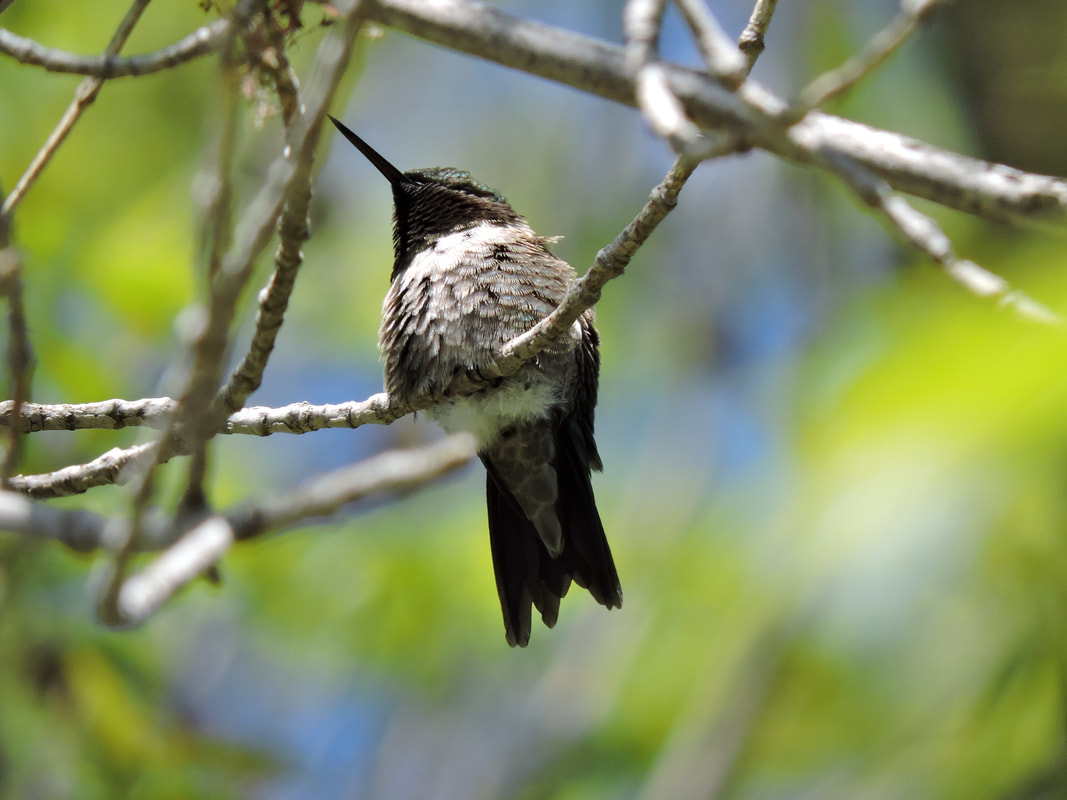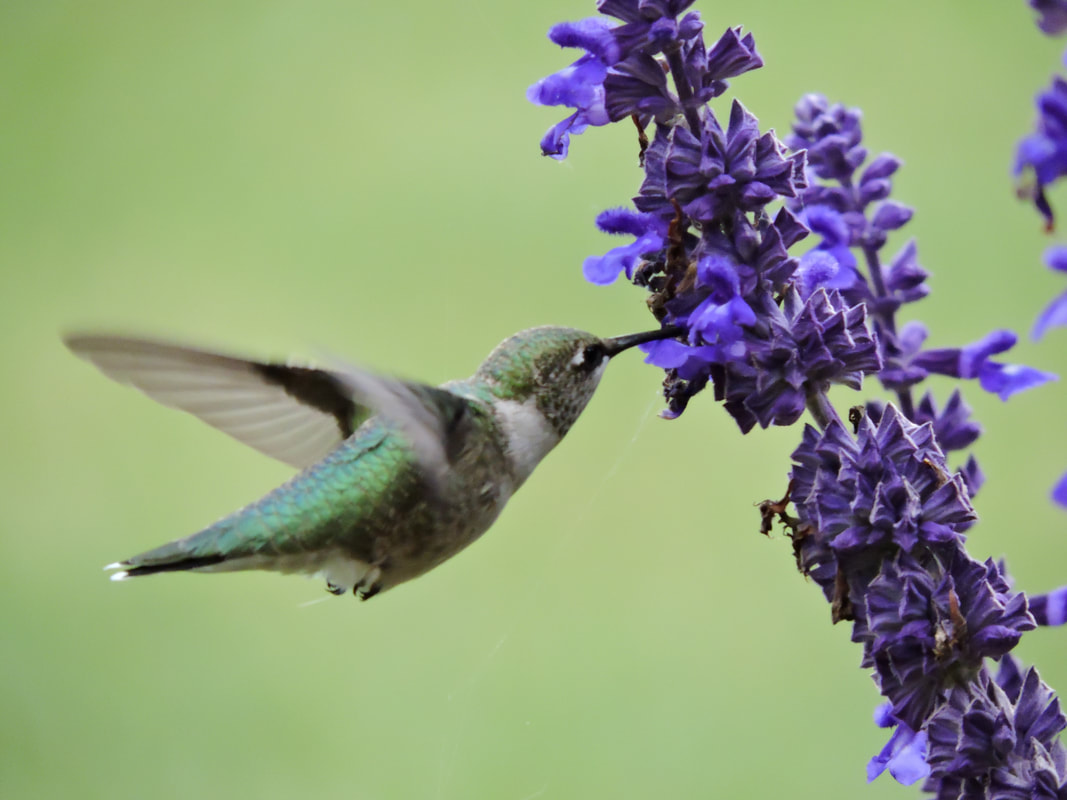Humming Blog |
 It was a battle between two very strong wills, harsh weather in its whitest form and the tiniest feathered firecrackers with an attitude that could scare even winter away. Heavy rain fell, followed by a 4-in blanket of snow, right after the first wave of hummingbirds showed up in Alberta. Two very cool days followed, but the danger fell at night after the snow had melted and the skies cleared. With high humidity and temperatures barely breaking 4C(40F) in the day, the temperature dipped dangerously low at night, leaving a blanket of ice coated blades of grass. The temperature bottomed out at -5C(22F), and even the perennials showed their disgust with droopy translucent leaves. I know that many people of the South never experience temperatures like this, especially during late Spring time, so their fear of hummingbirds being taken by cool temperatures typically brings serious cases of anxiety. What I'm about to tell you may shock you, but it's meant to put your mind at ease. We've had late season hummingbirds in the province of Alberta with temperatures as low as minus 28 Celsius(-20F), and they've survived several nights. What I firmly believe is that cold isn't the real threat, but rather, the lack of food during those frigid temperatures. It's during these colder times that feeders should be available to the hummingbirds because that is when they're most needed. Even I didn't want to get up the next morning when I saw the temperature Gauge coated in frost. But upon opening the door, nothing seemed to phase all the new migrants. Every songbird was singing it's tune as if nothing was out of the ordinary. The only unanswered question was whether the hummingbirds could endure the cold night. Well they certainly did. Feeders were active that morning, our dominant male was on patrol, and nothing, absolutely nothing would slow them down. Winter didn't stand a chance against these fiery little creatures, even if they woke up with frosted feathers. Even a couple female Rubies had arrived, the garden began to liven up, and within hours, Winter was no where to be seen. Image is our new dominant male. May 21, 2021.
0 Comments
 Many people left off last year with a garden full of hummingbirds, and are fully expecting that many more to return this Spring. There are so many differences from springtime to late summer or autumn. There are so many factors and variables involved that simply don't allow us to compare the two seasons. First of all, springtime has all the mature birds, and their purpose is very different. In spring time they've got a purpose of breeding, and nothing will interfere with that. They won't congregate in yards unless they're migrating through. They are very territorial because they want the breeding rights. Later in summer, during the southern migration, they do congregate, but with a little less intensity and anger, and I mean just a little bit less. They still do and will always have fire in their tail feathers. We always start off with a certain number of hummingbirds in springtime and then we end up with nearly double that later in summer. Sadly many of those young birds won't make it till the next spring, but the rest will, and they will be looking for a new breeding ground of their own. Over years of research I tracked the number of sightings every day from the time they arrived in Spring to the time they Departed in late summer, and the results just simply can't be compared. The largest numbers of sightings I recorded in Spring were only 200 to 300 per day. The numbers in late summer when all of the birds including adult males, adult females and juveniles are trying to feed and fatten up for the migration, are somewhere between 2 and 12 thousand per day. This is an increase of more than 10 times. It doesn't mean there are 10 times the number of birds, but rather all of them have a different purpose than in springtime, and that purpose is to feed as much as possible and head south with a fat belly. So ultimately what I'm trying to say is that the numbers in springtime have very little in common with late summer. If you have one or two regular birds hanging around in Spring, or they only show up once a day or even less, don't be alarmed. They've got other things in mind, and food is much lower on their priority list. Image is a late summer juvenile male Ruby throat hummingbird. N.E. of Edmonton, Alberta, Canada. |
Archives
June 2024
Categories
All
|
 RSS Feed
RSS Feed
